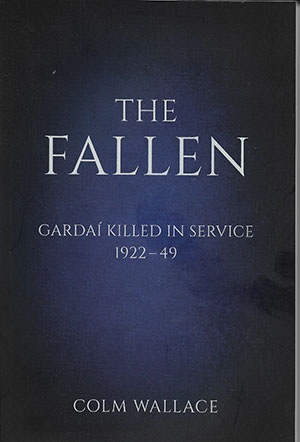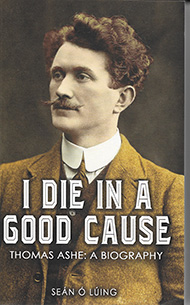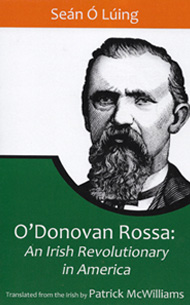BOOKWORM
Published in Book Reviews, Issue 6 (November/December 2017), Reviews, Volume 25By Joe Culley
Clair McDonald, The eighteenth-century landscape of Stradbally Hall, Co. Laois (Four Courts Press, €8.95 pb, 70pp, ISBN 9781846826467)
Terence Dooley, Castle Hyde: the changing fortunes of an Irish country house (Four Courts Press,€8.95 pb, 64pp, ISBN 9781846826436)
Susan Marie Martin, The shawlies: Cork’s women street traders and the ‘merchant city’, 1901–50 (Four Courts Press,€8.95 pb, 64pp, ISBN 9781846826443)
Declan Brady, Culture, politics and local government in Fingal, 1891–1914 (Four Courts Press, €8.95 pb, 56pp, ISBN 9781846826412)
Marc Caball, Kerry, 1600–1730: the emergence of a British Atlantic county (Four Courts Press, €8.95 pb, 64pp, ISBN 9781846826429)
Colm Wallace, The fallen: gardaí killed in service 1922–49 (History Press Ireland, €14.99 pb, 235pp, ISBN 9780750983761)
Bruce Bradley SJ (ed.), Studies, vol. 106, no. 423: Democracy in peril? (Messenger Publications, €10 pb, 110pp, ISSN 00393495)
Seán Ó Lúing, I die in a good cause: Thomas Ashe: a biography (Mercier History, €13.49 pb, 300pp, ISBN 9781781175057)
Seán Ó Lúing, translated by Patrick McWilliams, O’Donovan Rossa: an Irish revolutionary in America (Nuascéalta, €10 pb, 330pp, ISBN 9781530992188)
Were you among the groovy souls who attended the History IrelandHedge School on the Bolshevik Revolution in Mindfield at this year’s Electric Picnic? If so, you might be interested to delve more deeply into the history of the venue. As part of Maynooth’s series of Studies in Local History, Clair McDonald has produced The eighteenth-century landscape of Stradbally Hall, Co. Laois. McDonald packs quite a lot into this spare(70 pages) investigation, and shows how by studying the evolution of the demesne’s landscape we can also get an understanding of the evolution of the local society.
Stradbally Hall is still owned by the Cosby family, who were first granted the land in the sixteenth century (what the previous owners of the area thought about thisis left unsaid). In the early eighteenth century Dudley Cosby, after a successful stint abroad in the army, began to make improvements to the demesne, not least to further his credentials within society. One of his skills was the ability to take a piece of land from which he received £60 rent a year and divide it into three from which he recouped £80, £45 and £17 10s. What the tenants thought of this is also unsaid. Dudley also began building some of the earliest houses of what would become the town.
Dudley comes across as an ambitious but matter-of-fact landlord who worked hard to get to his station in life. It is his son, Pole, who reaps the benefits. Pole is sent to university in the Netherlands and returns heavily influenced by Dutch landscape design, not least—and not surprisingly—the use of water features. Pole is also free to dedicate his relatively long life to the business of being a professional gentleman.
The Cosbys finally make it to the big time when Pole’s son Sydney earns a peerage. It was Sydney who built the third and final great house, and who oversaw a complete, lavish redesign of the entire demesne in what is known as the English School.
On a similar theme, and in the same Maynooth series, Terence Dooley has written Castle Hyde: the changing fortunes of an Irish country house.The great house on the banks of the River Blackwater outside Fermoy, Co. Cork, is built on land given to Arthur Hyde by Elizabeth I in 1588. This general overview of the estate’s history reflects the common history of the landed gentry in Ireland. But specific to Castle Hyde is the influence of two American owners in the twentieth century and to this day.
 In 1931 Henry Loughlin, originally from an affluent Pittsburgh family but now the chief executive of the giant Houghton Mifflin publishing house in Boston, bought the estate, and over the next couple of decades the family—children, pets, cars—migrated each summer to Cork, where they entertained some of America’s élite, including Hugh Auchincloss and his stepdaughter Jacqueline Bouvier. (One can’t help but suspect that Loughlin was trying in some sense to compensate for the quiet stigma that, despite his wealth, being from Pittsburgh meantthat he would never truly be an equal to his Newport friends.)But as much as the Loughlins enjoyed their time at Castle Hyde they did little to maintain its upkeep, and by the 1970s the place was in ruins.
In 1931 Henry Loughlin, originally from an affluent Pittsburgh family but now the chief executive of the giant Houghton Mifflin publishing house in Boston, bought the estate, and over the next couple of decades the family—children, pets, cars—migrated each summer to Cork, where they entertained some of America’s élite, including Hugh Auchincloss and his stepdaughter Jacqueline Bouvier. (One can’t help but suspect that Loughlin was trying in some sense to compensate for the quiet stigma that, despite his wealth, being from Pittsburgh meantthat he would never truly be an equal to his Newport friends.)But as much as the Loughlins enjoyed their time at Castle Hyde they did little to maintain its upkeep, and by the 1970s the place was in ruins.
And into the story now skips Michael Flatley, who bought the place in 1999. Over the past two decades he has spent tens of millions on refurbishing the estate. Despite some early public disagreements with the planning authorities, the Flatleys have restored the house to its proper state, while also including some modern embellishments. Indeed, in 2013 the Irish Georgian Society described it as ‘one of the greatest restoration projects in Ireland’.

I’m old enough to remember the last shawlies of both Cork and Galway (who could be seen cruising Long Walk in bright red garments reminiscent of the sails of a hooker in the Claddagh Basin). Again from the Maynooth series, Susan Marie Martin tackles the story of the former group inThe shawlies: Cork’s women street traders and the ‘merchant city’, 1901–50. Martin begins by delving into the census information from the early twentieth century to learn more about who these black-clad street merchants—many recorded as ‘onion sellers’, a phrase specific to Cork—were, and broadens the scope by looking at the evolution of various business plans for the city and Garda records. Put simply, it is the story of how official society consistently conspired to make life as hard as possible for women who were already destitute. It is a story of both gender and class.
Also from Maynooth, Declan Brady examines the changing of the guard among a particular local political élite in Culture, politics and local government in Fingal, 1891–1914, while Marc Caball, inKerry, 1600–1730: the emergence of a British Atlantic county, positions the Kingdom in atransatlantic narrative.



The current issue of the Jesuit quarterly Studies addresses that most contemporary of subjects, Democracy in peril?Among the essays, Patrick Riordan writes on ‘The Crisis of Democracy: Practice and Theory’, and Fáinche Ryan ponders ‘On Consulting the Faithful in Matters of Doctrine: From Newman to the Second Vatican Council and Beyond’.
In honour of the centenary of both the birth of its author, Seán Ó Lúing, and the death of his subject, Thomas Ashe, Mercier has reissued I die in a good cause: Thomas Ashe: a biography. First published in 1970—nearly 50 years ago—the study was a labour of love and remains the only significant biography of a man whom Joe Lee describes in the new introduction as ‘one of the most remarkable personalities in Irish history’.
Another of Ó Lúing’s works, this time translated from the original Irish by Patrick McWilliams, has also been reissued:O’Donovan Rossa: an Irish revolutionary in America.
















